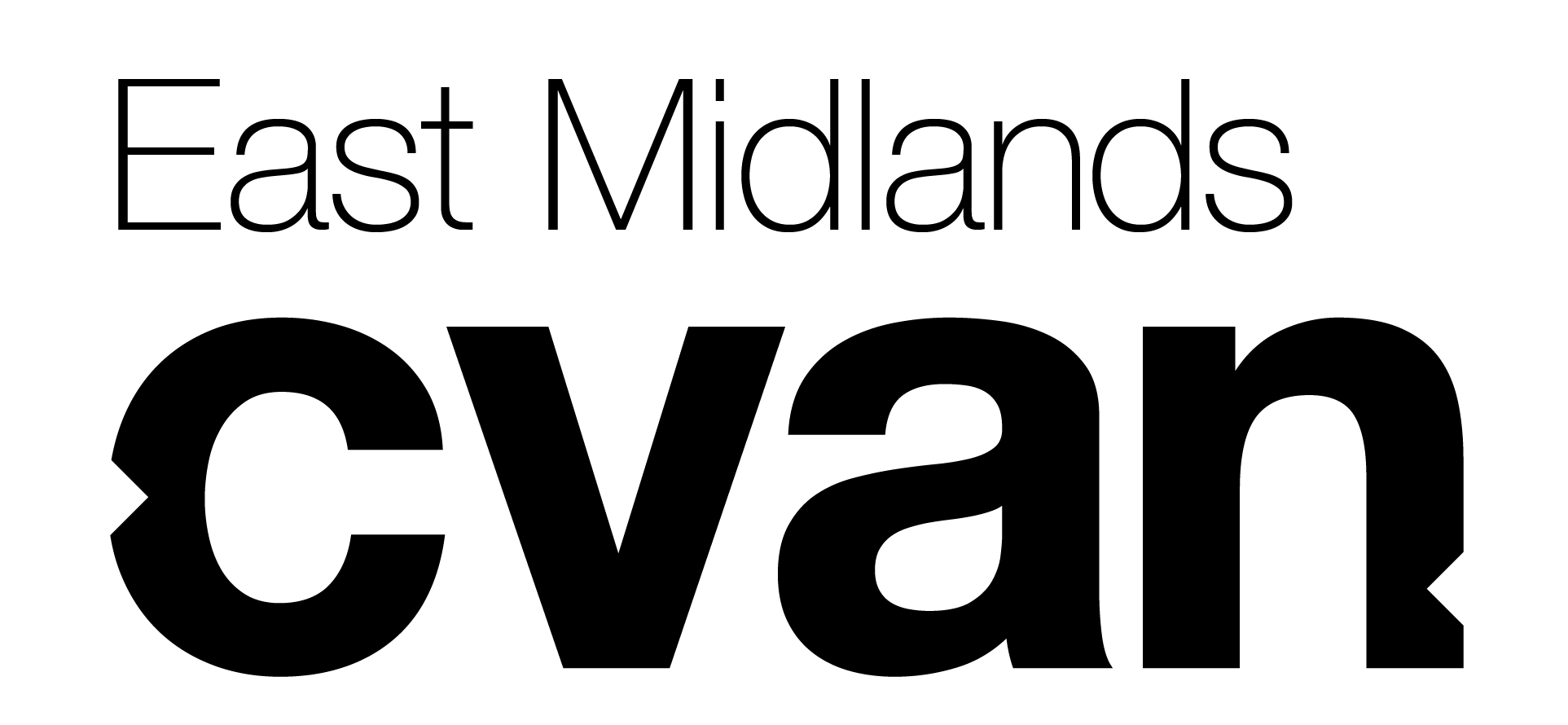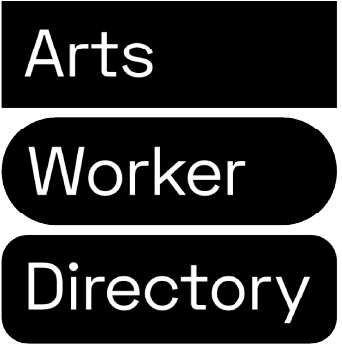Jane Domingos is an artist, best known as a painter but working in a variety of media, living in Leicestershire, after a long spell in Yorkshire as well as stints in London and Portugal. She is also an experienced graphic designer, producing digital art work for print and film. Jane has an MA in Art & Design Studio Practice from Loughborough University and she is also a graduate of Leeds University where she undertook a BA in Art History & English Literature. Jane has worked part-time as both a freelance fine artist and graphic designer for 34 years while raising five children.
Find out more about Jane’s work on her website and follow her on Instagram.
Where are you based?
I have been based back in the Charnwood area of Leicestershire for 17 years after being in Yorkshire for 20 years. Between 2017 – 19 I had a studio at Two Queens in Leicester city centre.

Describe your practice for us
Most people will know me as a painter but I actually do all sorts of stuff. I love design – I love having a problem that needs solving and finding a way to do that and that’s often how a painting starts. I set myself a challenge. When teaching about Monet’s use of a particular pale palette with no earth colours I set about painting the same scene in both daylight and at night but using exactly the same palette. I always find myself questioning whether something could be made better, work better, look better and will think of ways that could be achieved. I enjoy the materiality of painting and prefer to make my own stretchers, supports and frames if possible. I love the challenge of working with new materials but can happily pass time playing with materials I am familiar with – paint, fabric, clay. A lot of my design projects are for our home and garden where I am fortunate to have a partner who is willing to give my ideas a go and help me achieve a finished project. With five grown up children all with art practices of their own there is a lot of creative energy and knowledge to pool. I also enjoy writing and have been included in several publications.
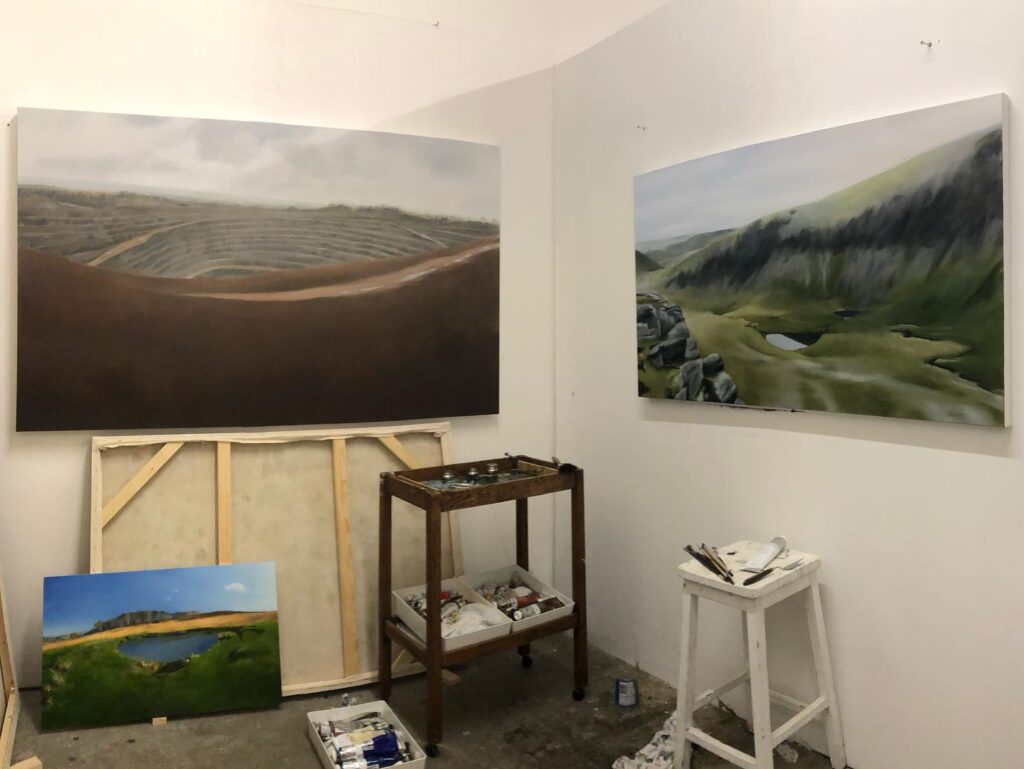
How long have you been practising and by what route did you come to your practice?
I find it difficult to answer this question. I think for a lot of ‘practising’ artists it’s what they’ve always done – it’s who they are. For example, I’ve drawn, painted and made things for as long as I can remember. I won a prize for a ‘Keep Britain Tidy’ poster design when I was in primary school and was commissioned and paid for doing a pen and ink drawing of Chewbacca when I was 13. The fact that I was making art and the sporadic winning of prizes and sometimes getting paid for doing something I just enjoyed doing hasn’t really changed over the years. I’d studied Art, Design and English Literature at A level, and secured a place on the Art Foundation at Loughborough. I had set my sights on Fine Art at either Falmouth or Slade but suspect I may have gone into an area of design had I completed the Foundation. I ditched the idea of art college and applied late for a joint honours History of Art and English Literature BA at Leeds University with Theology as a third subject in the first year. Much as I enjoyed it I regretted not having done any practical art which I continued with in my spare time. The then head of Fine Art who was my tutor for 12th Century Architecture saw my paintings and encouraged me to continue with both the course and the art practice. I graduated and the following year had a solo exhibition of watercolour and gouache paintings at the West Yorkshire Playhouse.
I had several opportunities over the years and each would’ve probably had some influence on my practice – the offer of a job with fine art publishers Medici or a place on a prestigious art conservation course through the Leeds City Art Galleries for example. I would say I missed out on a career in art because I failed to find a direction early on, however I may not have ended up painting and even though I don’t earn a living from it, I enjoy and value what I do. My first painting using heavy bodied paint was when I was almost 40 and it is acrylic on canvas and features my son. I produced a lot of acrylic figurative paintings mainly on board and gradually getting bigger until I moved on to oil paint in 2010.
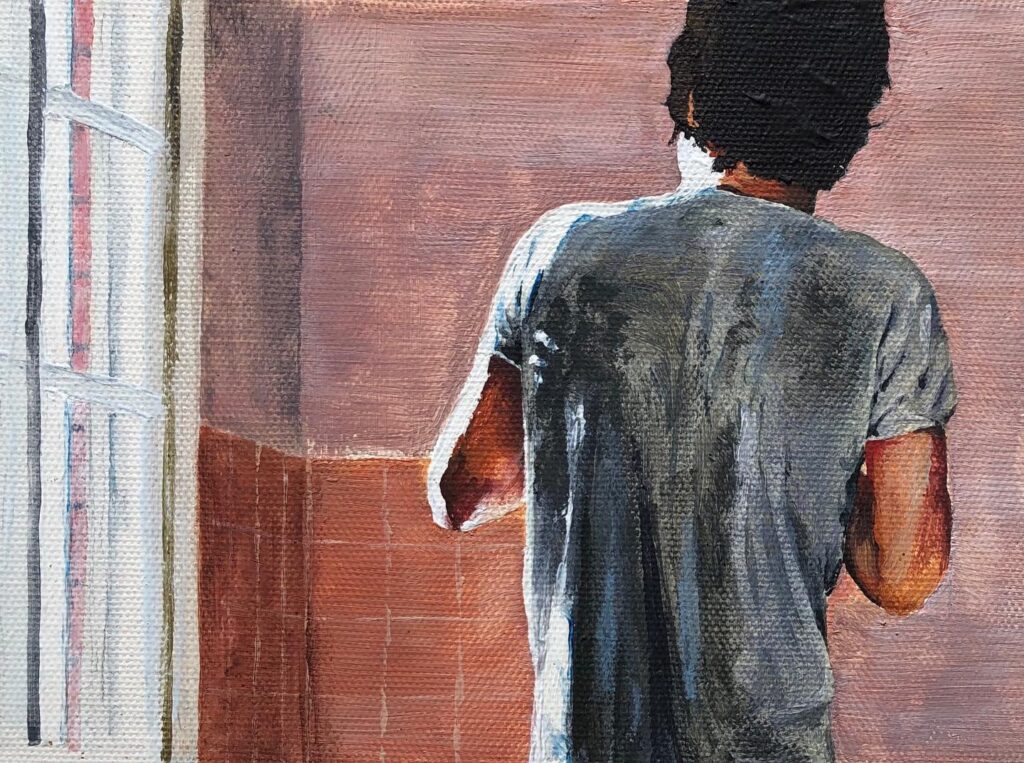
Does your background as a graphic designer, producing digital artwork for print and film have an influence on your work?
Initially the graphic design work came about as an extension of my artwork and some of it was voluntary work putting together publications for local organisations. As soon as home computers had become a thing and software for handling images and layout was available I had been playing around with creating digital images and incorporating it into my work. A production company approached me with the offer of a job producing digital artwork and graphics for their short films – mainly corporate videos plus all the packaging and promotional literature that went with them. They provided me with a good tablet and the latest Adobe software. I used mainly Illustrator and Photoshop. It was work I enjoyed and was easy to fit around young family life mainly because it was clean, took up minimal space and required no outlay from me. I enjoyed the design element involved with branding and logos. As the children became more independent I began to paint more and now had digital photography and software to utilise in the composition of paintings. Being able to process images digitally to analyse them – both photos of subject matter and photos of the paintings as works in progress helps me understand why something is or isn’t working. As well as being a tool to help with composition, digitising an image enables a more structured approach in terms of palette.
Although it is important to paint from life or subject matter with abandon and relying on our own judgement of colour and lighting it is also really interesting to study the colours in a photograph by taking samples. Creating palettes is very important to me – I enjoy working with colour and light. By studying the colours in an image I can then create a palette as well as a composition. A good graphic designer needs a good understanding of colour theory to make sure the message is effectively conveyed. Some things need to stand out or ping more than others. Understanding different colour schemes gives you control over what blends in and what stands out. It enables you to make a colour pop. I find being able to play around with palettes digitally before opening a tube of paint invaluable. So composition, focal point, and palette are all very important in graphic design and equally important in painting – whether figurative or abstract. I do use the same digital tools and theory in the preparation of a painting as I would apply to a digitally produced piece of graphic work. More recently I have been using digital 3D scanning to produce forms as well as digital 3D images to work from.
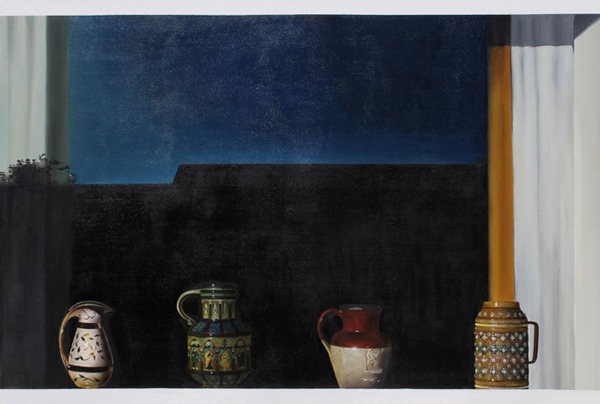
Tell us more about “the concept of freedom opposed to captivity and the notion of the horizon as hope for a better other or an endlessly shifting boundary” as a theme in your work.
In 2010 I embarked on a two year masters degree which was concerned with contextualising art and design studio practice. It gave me the time and space to work on a bigger scale and also to work with oil paint for the first time. Standing in front of a large blank canvas was a novelty and I was playing with creating a three dimensional space on that surface. Often it gave rise to the need for a horizon and I enjoyed varying the distance of the horizon. The further away, the less obtainable it appeared and yet it was there and with it the promise of something else beyond what could be seen. At the time I was concerned more with the idea of mental captivity and mental freedom and used the horizon to offer an alternative to what was being experienced in the fore. One painting that featured birdcages – one open, one closed – was a very literal representation of freedom versus captivity and there is very little hint of a horizon. To a certain extent it was how I felt at the time – that I’d allowed my practice to be constrained by domesticity. The washing line full of linen in a garden I added to the painting after my mum became ill with dementia. I drew comparisons between her life and mine and added objects that pertained to her. A painting that has been exhibited a few times is Through A Glass Darkly. There is no horizon. The main detail is in the foreground – the window we are looking through and four vases on a shelf. The room beyond is obscured by reflections. A horizon cannot be seen either ahead or in the reflection. When the plight of the ‘boat people’ was brought to our attention I painted a new work, Lost Horizons, in response. It depicted a dinghy full with migrants being tossed about in huge waves at night. I purposefully made it impossible to tell where the sea ends and the sky begins. The ‘horizon’ suggesting their ‘hope for a better other’ being at times extremely challenged and far from guaranteed.
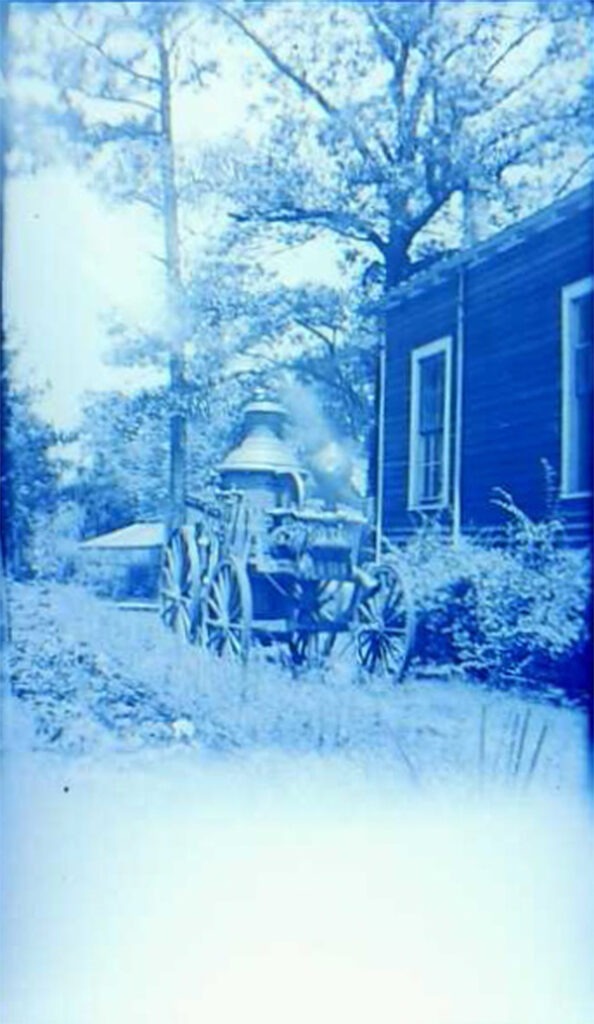
How closely linked are your painting and photographic practices? Do you play with subtlety of surface in your photographs as you do in your paintings?
Photography is a very immediate way of capturing a moment. I often wish I had pursued photography and/or film seriously as a medium. There are different cameras and different methods of developing that I would like to try. I think lack of funds has probably been a big factor here. When I was still at school somebody gave me an old Pentax 35mm SLR. I loved it and got the chance to develop my own film. That camera died at a time when digital cameras were becoming all the rage. They were fun at first but I have always hankered after the analogue cameras and haven’t had the opportunity to use a modern digital camera. My phone camera is what I’ve used for many years now. The limitations have frustrated me at times but the immediacy and ability to use in conjunction with apps has made it a very useful tool. I take hundreds of photos a month and out of those one or two may be a decent shot but I use all the images as material for painting and they are an invaluable method of documentation. In a way these are my sketch book – snaps to record an observation, form, the play of light, experiments in focusing on different areas in the same shot. I consider depth of field as important in painting as in photography. I like the fact that you can either create the illusion of depth within a painting or minimise depth and keep the two dimensional as flat and 2D as possible. Both require different painting skills.
Photography, like painting, can be subject to happy accidents that provide new effects. In 2013 the social media app Snapchat had a filter that turned a photo into a negative. I had a handful of negatives that dated from my dad’s time in the RAF in WW2 that had never been developed. Illuminated clumsily from behind with a lamp and photographed from within the Snapchat app using the negative filter, the negatives became positive images in hues of blue. When printed on paper these had the appearance of cyanotypes. Photography can provide different levels of surface subtlety and surface discrepancies depending on equipment used and conditions when photographing. If film is used, the process of developing can provide more interest. These can be further enhanced depending on what kind of surface the photo is printed on. Painting requires us to think about surface before paint is even applied and I particularly like building my own supports and creating a surface to suit what I am hoping to achieve with the painting. A finely sanded gessoed board can result in an ultra smooth polished hard surface which, if painted carefully in oil, will achieve an almost gloss photo finish.
In 2019 I was working towards curating an exhibition of photographic images taken from the documentation of my illness. These were to support the work I had been doing using 3D scanning and milling while on an AA2A scheme. 3D scanning and the building of 3D models are useful tools in producing a painting.
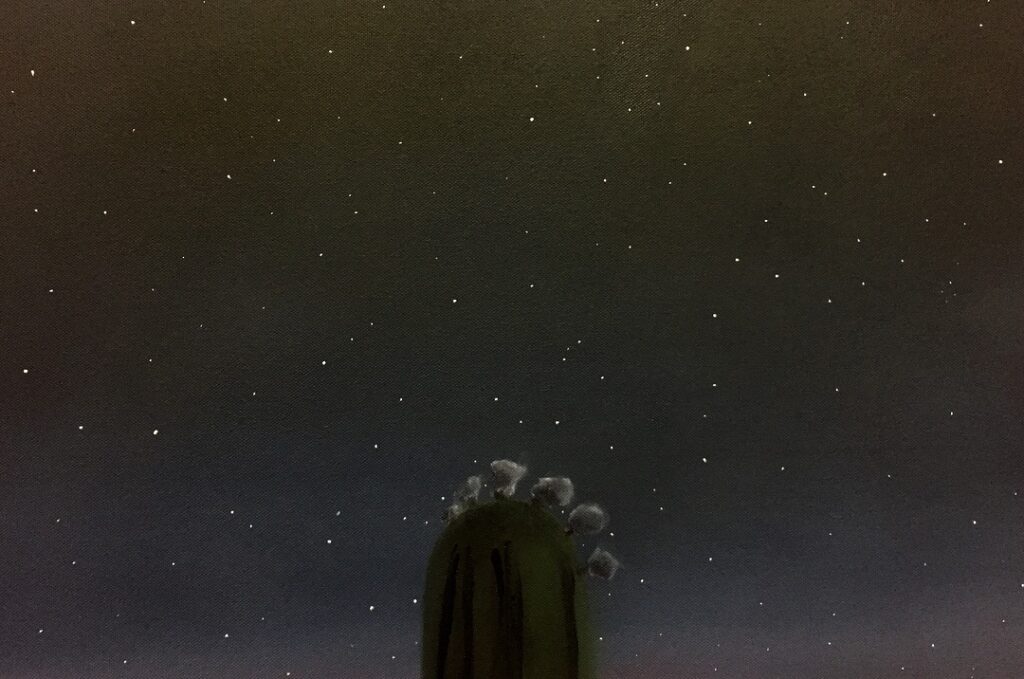
What is important to you in maintaining and motivating your practice?
New experiences – new places, new people. Stimulation. Challenging thoughts and ideas. Clever brains. Clever things. Connecting with the life source, being in nature. Love and humour. Experimenting with form, light and colour. Finding new natural materials. I think it’s the pursuit of light that ultimately defines my practice. If I am creating a three dimensional object – a sculpture – although materials and surface quality are chosen carefully, how light will fall on it and how it will interact with different lighting conditions governs the process.The work is an outlet for my creativity and a form of self expression but I also feel strongly that it is all the better for serving a purpose that benefits others. Either by simply demonstrating and teaching practical skills – technique, colour, composition, or by providing an object or image that is aesthetically pleasing, or by raising social awareness for an individual, individuals or cause.

What have been your biggest achievements since establishing your practice?
In 2010 while working for my MA I found out about the annual Summer Exhibition at the Royal Academy. To fulfil one of the course requirements – a business module – I applied for the 2011 Summer Exhibition. The thrill of receiving a letter stating that I had been selected and an invitation to the Varnishing Day events was incredible. To rub shoulders with and talk to some of the royal academicians such as Frank Bowling was a great opportunity. The artist who selected my work for their room/gallery offered me lots of encouragement and advice in subsequent emails. I was particularly lucky because art critic and art historian Richard Cork wrote about my work in his ‘gallery descriptions’. It was a tremendous eyeopener and window onto the art world, for example I had listed my work in the catalogue as NFS but realised during the private views that people were there very prepared to buy. I put a price on mine and it sold immediately. My painting was also selected for the exhibition guide for young people and appeared with questions to encourage discussion around the work.
A few months later I attended an event at the Maggie’s Centre attached to Charing Cross Hospital. I had for some time been impressed with their concept – the belief that, along with conventional medicine, aesthetics were also essential to a person’s well being. Richard Cork had recently had a book published called The Healing Presence Of Art: A History Of Western Art In Hospitals and myself and my buyer were invited to attend a talk by him on the subject. At the time my painting from the Summer Exhibition was being considered for inclusion in a Maggie’s that was under construction. Sadly, it was too big for the space and it never happened but I felt so honoured that my painting had been considered.
The Summer Exhibition experience taught me that there is an ‘art world’ and that it is big business at the top and can be rather cut throat but it also really illustrated how important art is for people’s pleasure and well being. For the first time, having received fan mail from people I didn’t even know, I realised that my own work could actually move people and have an impact. It felt like a huge responsibility and one that I have taken seriously ever since.
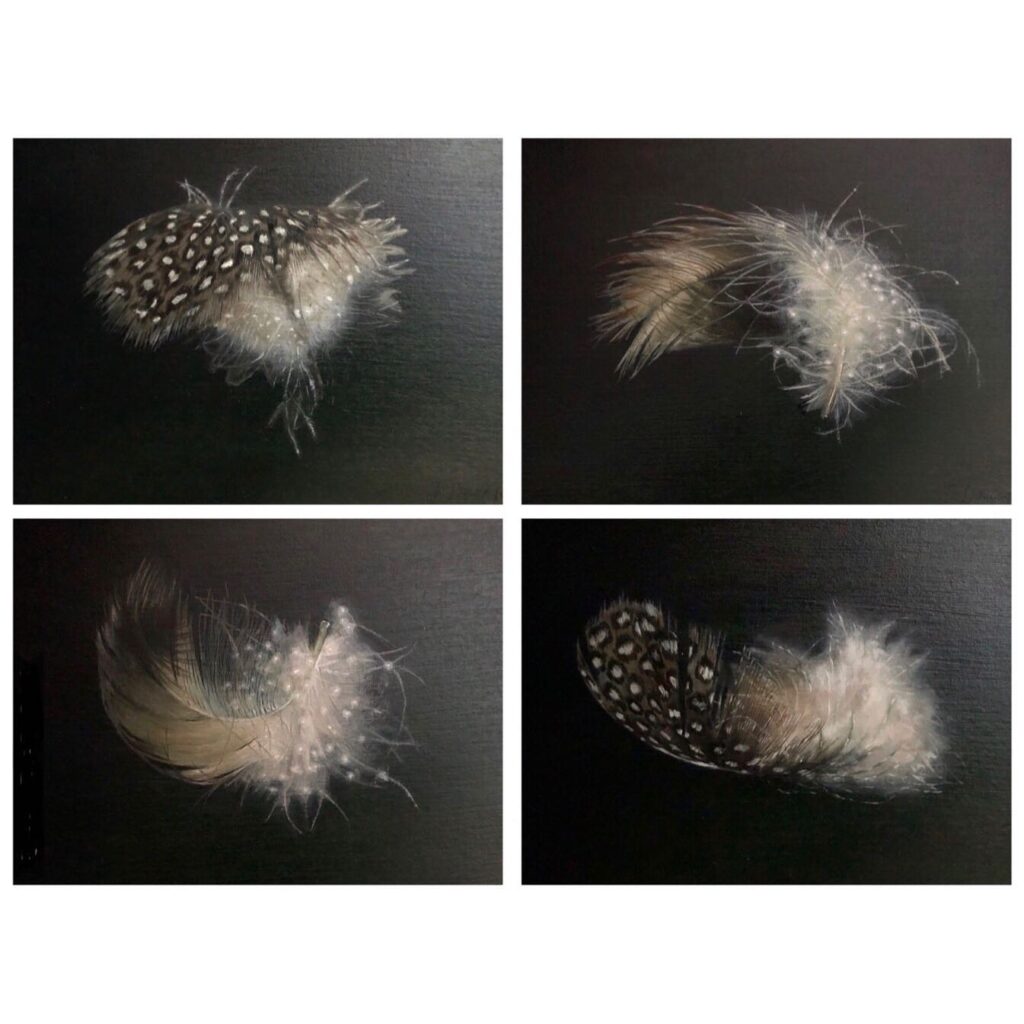
What have been the biggest challenges to your practice?
Lack of financial stability and, since 2014, ill health are two of the biggest challenges to my practice. Self doubt; striving to be something else style-wise instead of accepting what I do as being valid, another. As far as painting is concerned I have fought for many years against the detailed, photo-real work I always seemed to end up doing and not only admired but envied artists who had a much looser style. Back in the beginning of 2020, I felt like I had a bit of an epiphany. I was sitting in pain, painstakingly producing four small paintings of feathers, working from both photos and life, under a spot light, using fine paint brushes and a magnifying glass. Suddenly I had this wonderful moment of clarity when, for the first time, I felt like what I was doing really was a great privilege. It was the realisation that it was a wonderful thing to have the opportunity to look so closely and to paint what I find so that other people can experience what I’m seeing. Unfortunately very soon after that my illness returned and now the mechanics of painting are very challenging.
What is the most interesting or inspiring thing you’ve seen or attended recently, and why?
It’s really difficult to think of just one thing in these unprecedented times. Like everybody else, being in lockdown has been a great opportunity to read and watch much more. I’ve enjoyed taking advantage of things such as films, concerts or exhibitions available free online for a limited length of time. Friends – especially those who are artists – have kept me entertained during my months of treatment by sending links to anything online that they had found interesting and inspiring. The film Infinite Potential, about the life and work of physicist David Bohm is one such example but there were plenty of others, most of them visual art and performance based. Photography, architecture, food styling, plants and landscaping, textiles in art and fashion are all forms of design and visual expression that fascinate me. Reading about artists, designers and makers featured in magazines such as The World of Interiors and Selvedge are always insightful and take you beyond your own culture. Most of the big art galleries such as Tate, The National Gallery, Hauser & Wirth, MOMA, The Metropolitan to name but a few have lots of films and learning resources about individual artists and exhibitions. I can spend a long time on those and especially like the facility to really zoom in on paintings and sculpture. A lot of the artists I follow on social media produced, during lockdown, videos of their practice and work which I found really interesting. I am struggling to name just one or two inspiring things.

Which other artists’ work do you admire, and why?
I admire artists when they demonstrate a keen eye, skilled execution and diversity. Artists who have looked at something and really observed how that thing is formed, what its individual qualities and characteristics are and then conveyed that to us in a context that resonates or demands questions. Some of the early still life painters such as Juan Sánchez Cotán from the 16th Century who produced fantastically detailed original work without the privilege of cameras and artificial light fascinate me. Painters who are great figurative artists as well as great abstract artists who have proved they are brilliant at observation and accurate representation and then take that understanding of form and colour and light and create an abstract work that is capable of provoking great emotion in the viewer such as Gerhardt Richter or Rothko. I like art that provides a voice for those unheard in society. There are many good contemporary artists working hard to raise awareness for those whose voice often goes unheard. There have been artists all down the ages who have done this. French 19th century realist painter Jean-François Millet painted ‘The Gleaners’ which appears romantic to us now but at the time it was painted to draw attention to the plight of the peasants. I admire his skill at capturing human expression as well as lighting and landscape a powerful combination. There is a lot of early 20th century American art that I enjoy. The advance of the Industrial Age and the Depression provoked some powerful pieces both of urban and rural art. Edward Hopper is an artist I admire for his use of colour, depiction of low light and inclusion of protagonists that leave you asking questions.
Where do you see your work in the next 5 years?
Illness has deprived me of the luxury of looking ahead and I have to live and work very much in the here and now. I strive to keep learning and developing. There will always be much much more I could’ve learnt. However it would be nice to feel that I had reached a point where I felt at peace with being an artist and that I felt I had done my best to illustrate something of the complexity of life – both the beauty and the sadness that we all must experience. I think one of the greatest compliments I have received is when people say they have found my work peaceful. Much as I’d like to be making people laugh, peace is the most fundamental of states an individual needs and what the world needs.
Who would you most like to have visit your studio?
Someone with an interest in art and a deep understanding of human behaviour with a good sense of humour and a love and compassion for all things living. I like exchanging ideas with people from different disciplines. If it was an artist then maybe David Hockney – because he’d get excited about detail and colour and light and he doesn’t take himself too seriously and it turns out I’ve seen quite a lot of his work in exhibitions and read quite a lot of interviews with him.

Where can we see your work? Do you have any upcoming exhibitions, events or projects?
Painting has been very difficult this year but I have one new piece in the Leicester Society of Artists annual exhibition which is online this year. The Tarpey Gallery in Castle Donington exhibit my work. Various work is shown on my website janedomingos.com and for anyone wanting to see photos then there’s Instagram
Jane was interviewed in December 2020.
All images are by and courtesy of the artist.
